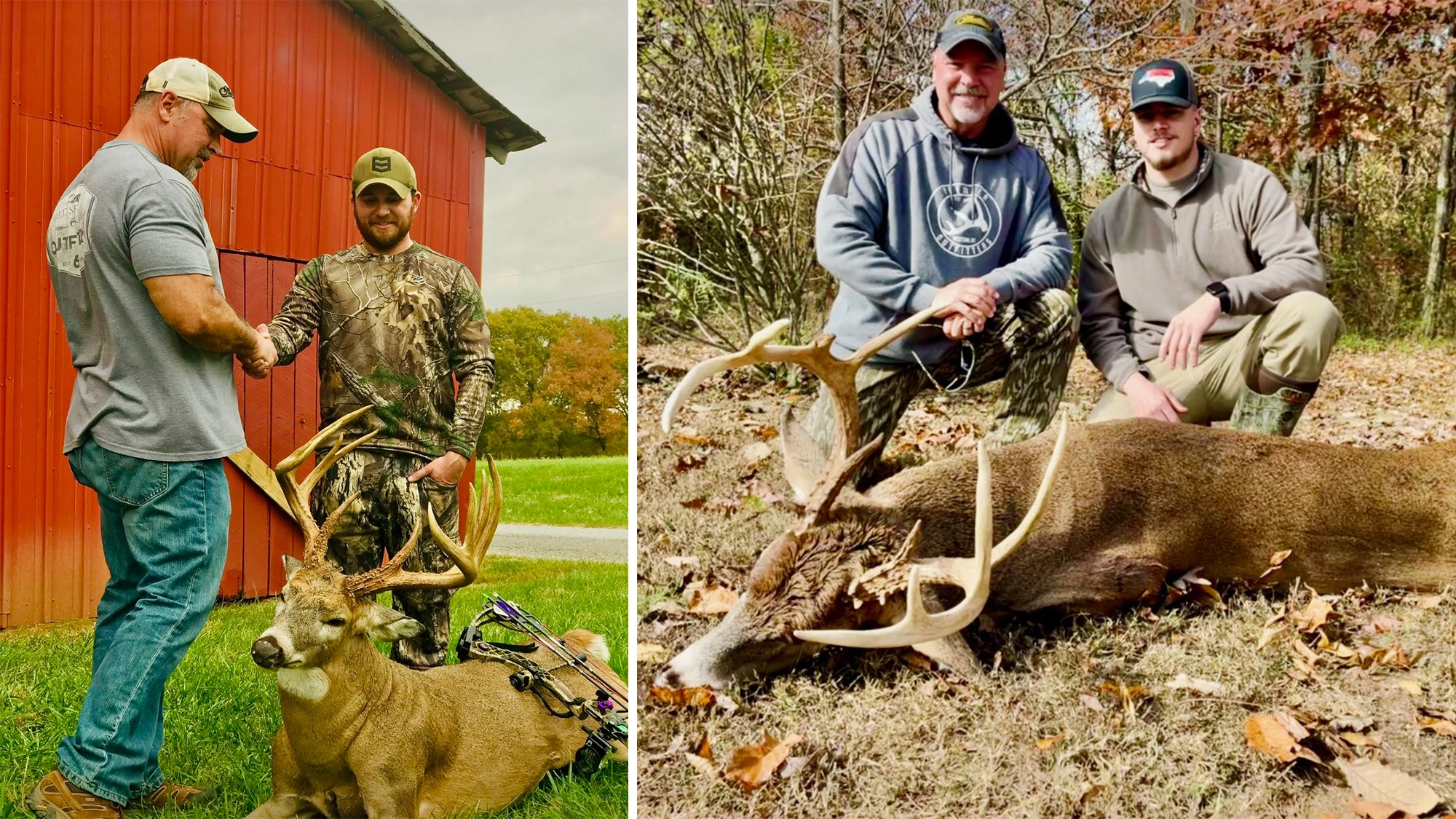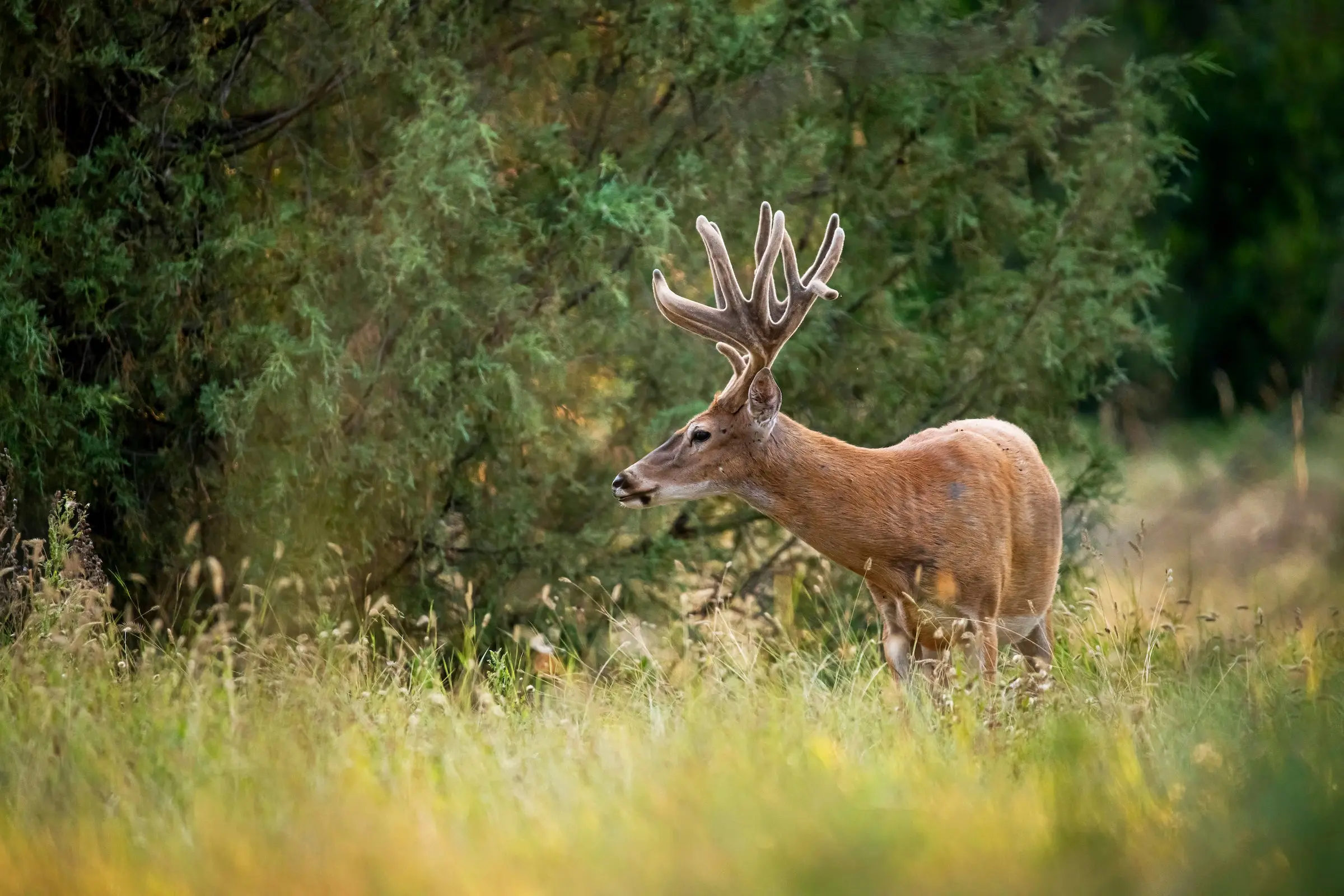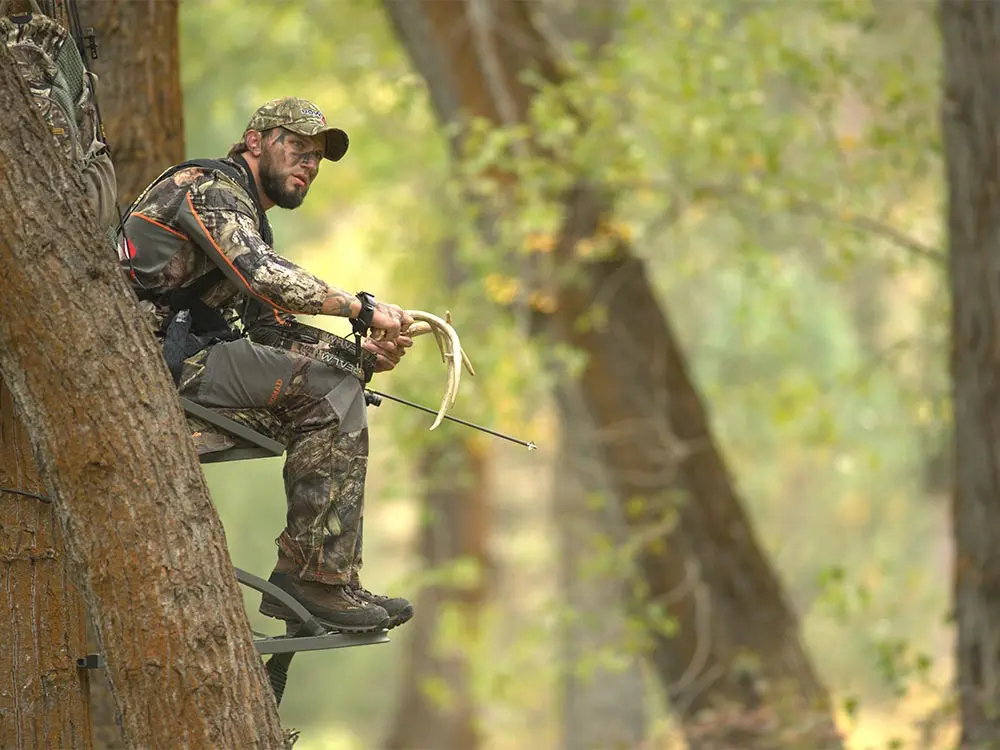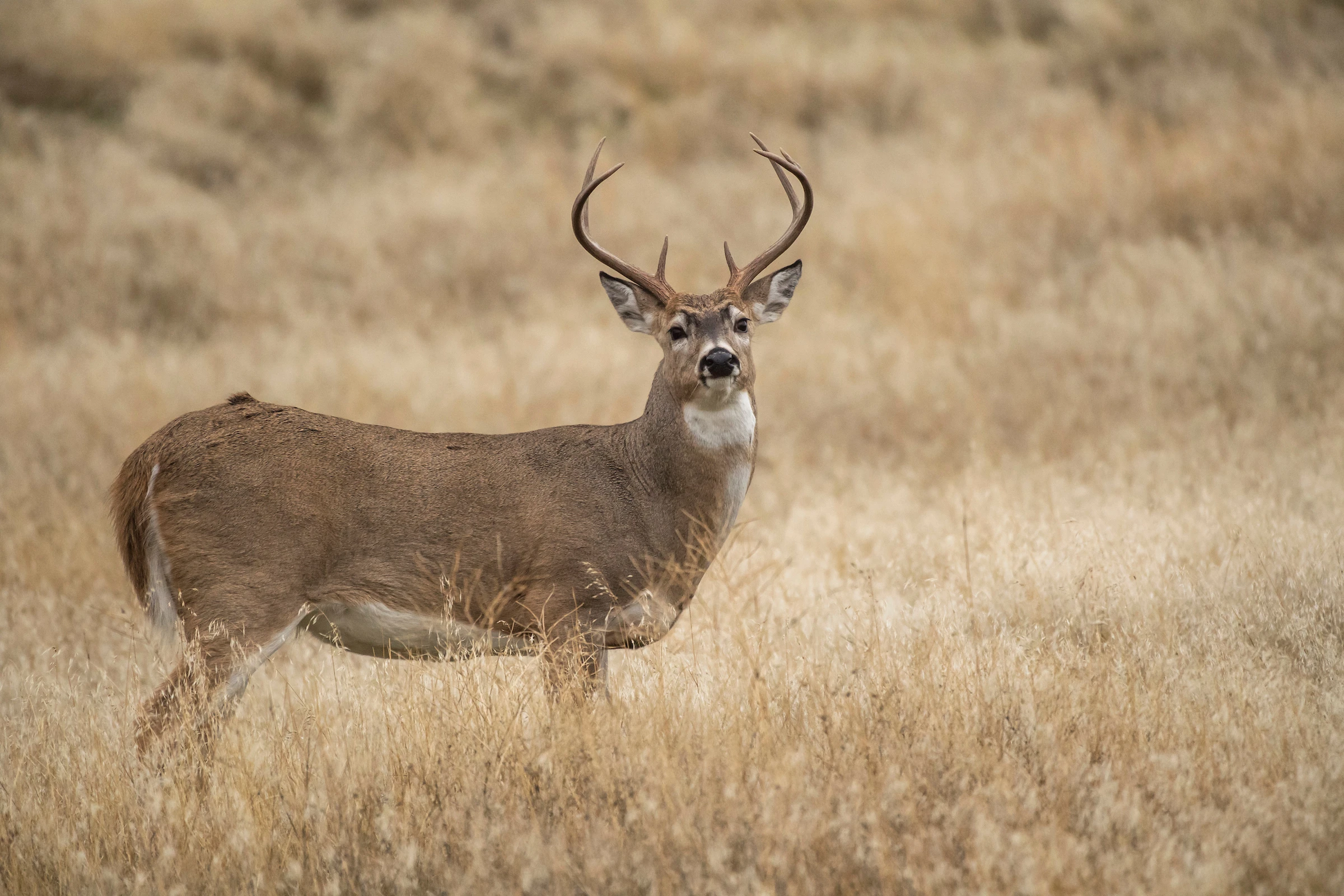Mark Clifford started Premier Outfitters 16 years ago in Christian County, Kentucky. In the many seasons since, he's seen pretty much everything when it comes to trying to put clients on mature whitetails. “We guide on 23,000 acres here, and while we take a lot of hunters, there are farms that we literally never hunt in the course of a fall,” he tells F&S. “Most of our clients come here with the dream of killing a mature buck, and we do our very best to make that happen for each and every hunter.”
That not always easy, of course. Big deer are super-savvy, hunters don't always make the best decisions, and putting a tag on a trophy buck almost always involves some luck. Still, Clifford has plenty of advice to help you get it done, whether you book with him or not. Below, in his own words, the Kentucky guide dishes on big deer, go-to gear, successful hunters versus unsuccessful hunters, and the challenges and joys of guiding both.

How Mature Bucks are Different
Mature bucks are way harder to hunt because they've seen it all and have almost no curiosity. You have to put yourself in the mindset of an animal that’s been chased by predators ever since he wore spots. That deer is looking for a way to get from Point A to Point B without being seen, heard, smelled, and experience has taught him just how to do that. If you hunt him like other deer, you’re going to come up empty almost every time.
A perfect example is how deer use trails. Most guys get excited when they see two or three major trail systems come together in the open hardwoods, and they want to hang a stand there. Well that’s an excellent place to see tons of does and fawns and the occasional young buck. But—with the occasional rut sighting being the only exception—you’re not going to see a mature buck from that stand. I like to compare an old buck with a prison escapee; you’ve got cops and dogs chasing you, so where are you going to go? To the thickest and nastiest cover you can find. Look for that faint trail heading back into the gnarly stuff, and that’s where your big deer is living.”
Related: How to Hunt for the Biggest Whitetail Buck of Your Life
Why the Early-Season Is Lights-Out

Here in Kentucky, we open the first weekend of September, and this is the only time of the fall when a mature buck doesn’t act like one; he’s probably hanging in a bachelor group and heading to a food source with plenty of daylight left. If you play your cards right, this is what we call a "lights out" hunt, and it can be really popular in our camp, depending on when the opener falls. When the opener is super early in September hunters know more bucks will be in velvet and there’s a lot of interest in killing one of those deer. When the opener falls later, like the 8th, we get a lot fewer bookings because guys know more deer will have shed velvet.
There’s a couple of keys to hunting this period. First, do your scouting—through observation and trail cams—to find out the best food sources and when bucks are using them. There are only so many grade-A spots, and it will take some work to find them. We look for still-green soybeans, acorns falling close to the edge of the woods, and food plots. And, of course, only hunt when the wind is right. Finally, forget hunting mornings. Early-season bucks bed very close—sometimes only 30 or 40 yards—off a food source, and you’re just not going to get in a stand in the morning without bumping them. Go golfing or fishing or something else fun in the morning, and save that hunt for the afternoon.”
Related: Early Season Deer Hunting: 10 Expert Tips
Just Be Quite, Sit Still, and Stay Ready
Being successful on big bucks often comes down to really basic stuff that some hunters just have a hard time understanding. You have to only hunt stands when the wind is right. You have to have a bulletproof entry and exit that lets you get to and from a stand without being seen, heard, or smelled. A lot of it is just respecting their incredible senses. We’ll pull up to drop a hunter off at a stand, and we’ll say in the truck "Once we step out of this vehicle there’s no more talking, OK?" And we haven’t taken five steps toward the stand and the guys is asking, "Think I’ll see a shooter tonight?" Honestly, what is so hard about staying quiet for the few minutes it takes to walk into a stand?
The other thing that is amazing to me is how many guys simply can’t put their phone down for even a few minutes. They’ve paid good money to come here and hunt for a nice buck, but they aren’t going to miss their favorite college or pro team play football. Then the next thing they know, there’s a shooter buck standing 15 yards from the tree, and they have no idea where the deer came from and they’re not even close to ready; their bow is hanging on a hook and they’re holding on to their phone with both hands.
Listen to Your Guide
Hunters goof things up in a lot of creative ways. I’m amazed, for example, at the number of guys who’ve dry-fired their bows at the practice range. The bows usually just blow up. But probably the most memorable in-field screw-up was on a 200-plus-inch buck a few years back. We had a guide filming the hunter, and the guide spotted the buck about to enter the field they were sitting on. He told the hunter to stand up so he’d be ready to shoot when the buck got to them. Well the hunter ignored that and stayed seated. In the next few minutes, several does entered the field and fed ahead of the buck, who stayed in the background like they often like to do. Finally, there are at least a dozen does between the hunter and the buck when the buck started approaching the stand. The guide whispered "Don’t stand up yet," and, of course, the hunter ignored that and stood and one of the mature does in the group snapped her head up, busted him and blew. Every doe left the field and naturally the buck followed. Just like that, his chance at a giant was all over.
I have to tell you, the guides here are pretty special people. Not only do my guides not get to hunt, they stay super busy with all kinds of stuff. Right after they drop a hunter off, they head to another stand area to observe and film deer movement. And, of course, they’re tracking and recovering deer. When we have a full camp and multiple deer shot in one day, they may not get to bed at all before it’s time to get guys out for the morning hunt. Still, nothing tears these guys up worse than a hunter who’s reluctant to follow their advice; they truly want to see guys succeed and put a ton of effort into making that happen.”
Related: Secrets of the Deer Guides: Hunt Early, Forget the Moon, and Avoid These Mistakes
Go-To Gear vs. No-Go Gear

“I’m a big believer in Ozonics because I’ve seen it work first-hand. I was filming with Brad Rucks from Deer & Deer Hunting magazine when he was hunting here. We had five big, mature does come into this cornfield we were hunting, and they fed straight downwind of us forever. Not one of those old girls even lifted her head to look our way. That really got my attention.
The other thing I recommend is a grunt call. We set up a lot of stands on the edge of thick bedding cover—especially during the pre-rut—and a grunt call is an excellent tool for arousing a buck’s curiosity and coaxing him out of his bedroom to check out who’s in the neighborhood.
On the flip side, I don’t allow any form of deer scent in camp. I’m convinced it spooks mature bucks. The same holds true for rattling antlers. Our mature bucks have been around the block and are going to circle downwind before they approach any fight they hear. With our wooded cover, most of the time you’re not going to even see this deer before he busts you. I also feel most mature bucks here are just not that interested in fighting. I compare them to me; when I was young and heard a fight or argument, I was running over to check it out. Now I’m 62, and when I hear a fight break out I’m going the other way. I have no desire to mix it up with other guys.”
Related: Best Deer Calls of 2024
Remember to Keep It Real

TV shows, magazines, and videos have hunter’s expectations way too high. Many guys who come here think there are 150-inch bucks running everywhere. I tell them that it takes a lot of bone for a buck to reach 135 or 140, much less 150. We may have 10 bucks here that are at least four years old or older, and three of them might go 140 inches. It just takes the right genetics for a buck to grow a big rack, and most of them just don’t have it. They reach 3 or 4 years old and that’s as big as they’re going to get. I have been hunting all my life, and my biggest buck is 179-6/8”, a deer that’s a buck of a lifetime for most areas. Truly giant deer are just rare, despite what hunters believe. And any mature whitetail buck, no matter what its score, is a heck of a trophy.
What It's All About
A while back we had a buck we’d named "Samson," and he was a giant deer we’d been watching for three years. Well, we had a kid in camp who had not only never shot a buck before, he’d never killed a deer. We thought, What a perfect hunter to put on Samson.
So we got the kid in this stand, and he hunted that spot for five days in a row, sitting through some tough conditions, including rain. Finally, on the fifth day, Samson shows up and the kid makes a perfect shot and kills him. When we recovered that buck, the kid just started laughing, he was so excited—and pretty soon that laughing turned into crying. It was just such an honest expression of his joy that it was a really special thing to be a part of.”


